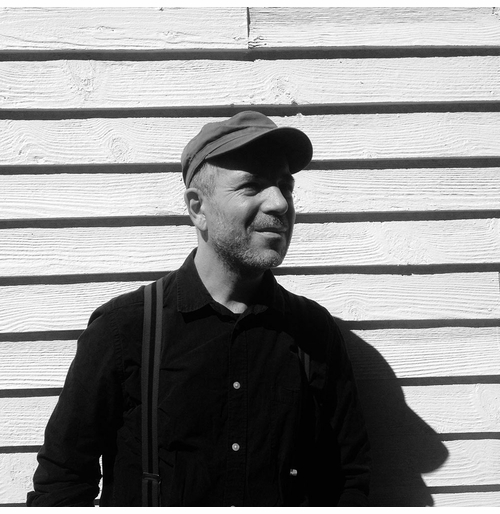| RECENT POSTS DATE 1/14/2025 DATE 12/26/2024 DATE 12/18/2024 DATE 12/17/2024 DATE 12/14/2024 DATE 12/12/2024 DATE 12/12/2024 DATE 12/8/2024 DATE 12/8/2024 DATE 12/7/2024 DATE 12/7/2024 DATE 12/5/2024 DATE 12/5/2024
| | | HERBERT PFOSTL | DATE 1/22/2015
As 2014 wound down, Herbert Pfostl, Curator and Book Buyer for the New Museum Store posted a suitably brilliant 'Best Of' list on Facebook. We couldn't help but notice quite a few of our own titles on the list, and so we asked Pfostl to elaborate on individual titles. Below is is spot-on review of The Song Cave's 2014 treasure, Georges Braque & Others: The Selected Art Writings of Trevor Winkfield, 1990-2009. Stay tuned for more!
By HERBERT PFOSTL
Not very familiar with the work of Trevor Winkfield, I was upset for years about his painting on the cover of Raymond Roussel's How I Wrote Certain of My Books, published by Exact Change in 1996. But after reading these selected art writings, I began to sense the what and why of color and of composition in his paintings, however foxed they still leave me. A love for Pinkham Ryder, Richard Dadd and Samuel Palmer made me open this book of essays, but I fell hard into giddiness when I read Looking Into Vermeer.
Winkfield worships "The Sphinx" Vermeer, "remote and incomprehensible as some medieval Master of the Slanting Light" whose paintings convey "mesmeric range" and "unearthly naturalism." He describes spaces as, "constructed with hallucinatory accuracy," and a light "which nowhere rakes but falls, and in its falling glows." Paintings where "whole bodies seem built out of this light" and "elsewhere they appear eaten by it." I love these passages, which remind me to a degree of Roberto Calasso's appreciations, especially when Winkfield writes about the "godlike air" and "classical deities caught off duty." "Whatever their origins," he offers, "most of Vermeer's divinities appear destined to spend their lives under house arrest, ensconced in hermetic chambers." Respect and handshake for such fine lines.
Dear Chardin is appreciated next, and one is made to think of Robert Bresson's concerns in passages like, "It's their thoughts rather than their tasks which provoke the painting." And, a few pages later, "everyone under Chardin's brush is in a state of grace, and the tasks which absorb them are performed as though they were the most important things they could be doing at that particular moment." This, of course, is how things ought to be carried out, but that's another story, a "little history of lost arts."
I didn't know about the French seventeenth-century still life painter Lubin Baugin, but I am glad for the introduction. There are more fine essays in the book. One, Money Well Spent, is on William Beckford, who "lived in an age when ritual was still a part of everyday life," and who himself "led his life as though it were a work of art, conceived in one long magnificent gesture." Here Winkfield adds, "anyone who finds such gestures outlandish has obviously been born in the right century." Exactly.
Another text, Palmistry, is on Samuel Palmer, with journal entries on ice and urinals, quoted from Gilbert White and Gerard Manley Hopkins. This is followed by Richard Dadd, Then The Rest, on the insane asylum work of this nineteenth-century artist and murderer of his own father, who—forced to work from memory and vision—thought of himself as a "walking encyclopedia of forms." Winkfield appropriately invokes Emily Dickinson's withdrawal "at the very same time across the Atlantic," because "for both," he writes, "intensity of vision allowed them to become a blade of grass. And their hermetic status authorized all the time in the world in which to become so." They won't teach you that in art school.
Relics Have Their Season, about Albert Pinkham Ryder's work, reminds us that we are probably the last generation able to see these paintings, which are "rapidly disintegrating." Bid farewell, then, to these canvases of shipwrecked nights, the "silver of landscape" by an "abstract painter who didn't realize he could be one," landscapes "destined to become memories" painted by a "clairvoyant" whose "ambition was to find and then paint the brain of the sea. And this he did to excess."
Lastly, The Signac Syndrome, on Paul Signac, born 1863 in the Rue Vivienne—later the home of Lautréamont—speaks of a "short brilliant start, followed by watered-down repetitions." In the essays on Florine Stettheimer, Brancusi and Stieglitz I stopped marking things, and from the rest I felt somewhat exiled. But like my other favorite book from The Song Cave, of the poems of Alfred Starr Hamilton, this one is full of devastating insight (and charming asides). It feels good in your hand and should occupy a central place on your shelves.
HERBERT PFOSTL works at New York City's New Museum, where he curates the Store's selection. He is the co-editor of To Die No More with Kris Minta, and recently published Light Issued Against Ruin with The Brother In Elysium. His artwork and upcoming projects can be viewed at Paper Graveyard and Blind Pony Books.
 The Song Cave
Pbk, 5.5 x 7.5 in. / 204 pgs. $20.95 free shipping | |
|

